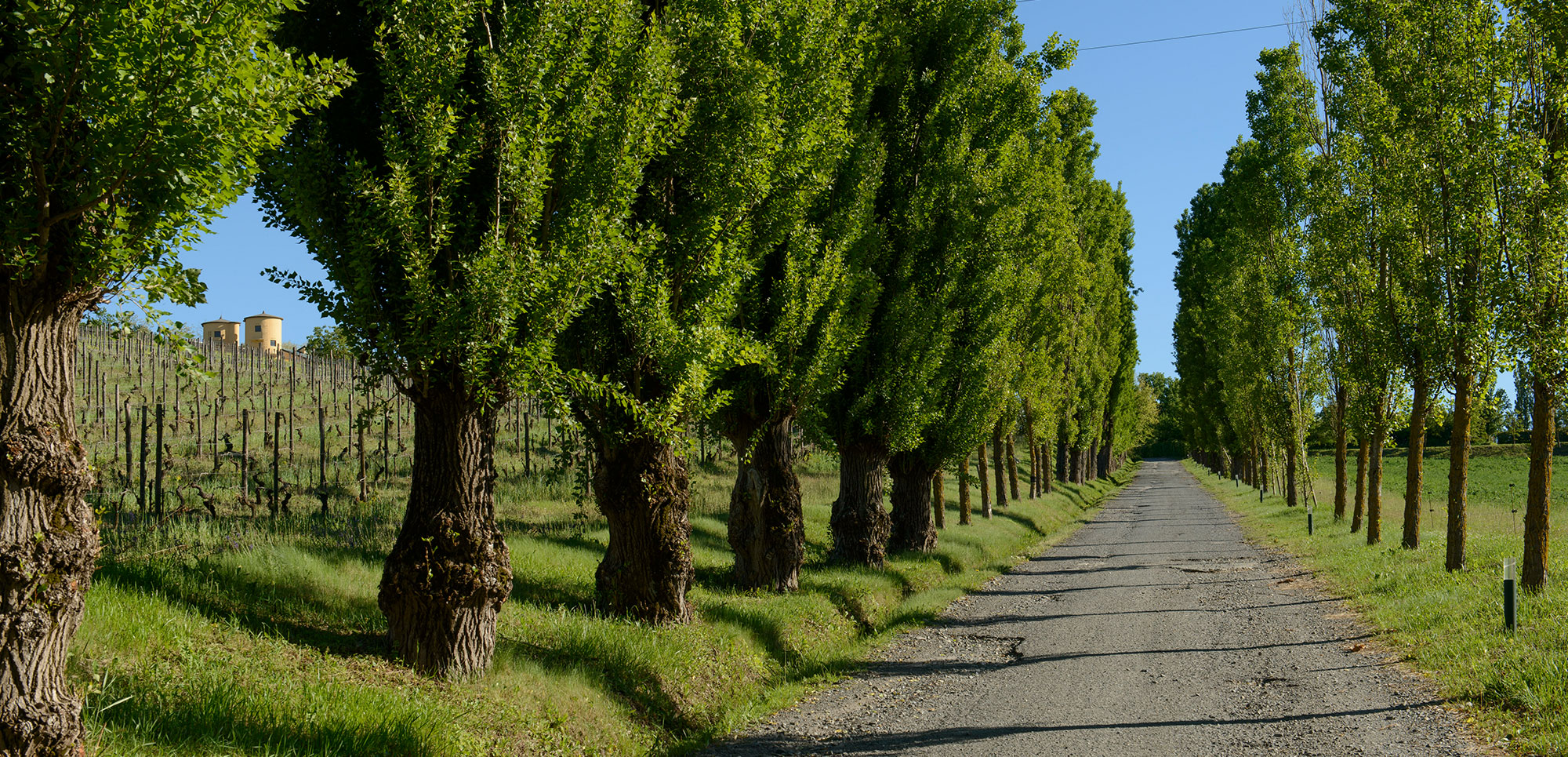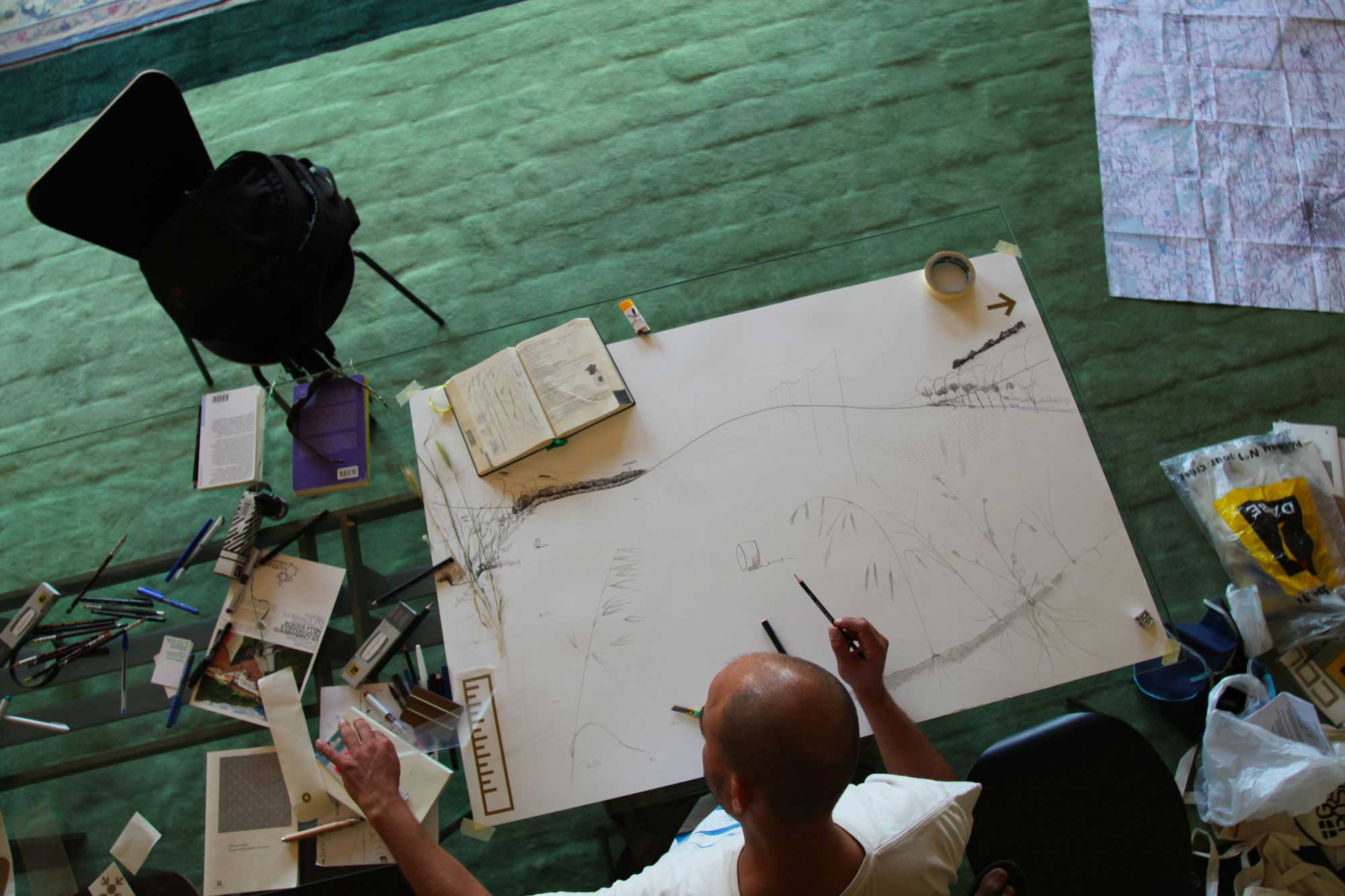Martin Rauch, the raw earth Artist
Interview with Martin Rauch*, by the architect and journalist Giuliana Zoppis.
By building the cellar’s walls with the pisé technique, you utilised a blend of excavation and local soil, with extraordinary results. What kind of other advantages does the pisé technique bring relating to the animal preservation and particularly that of wine?
Soil is ever more utilized in several parts of the world, as a green building material due to its sustainable characteristics. Firstly, its breathability allows building walls which are free from condensation. Furthermore, the capacity of regulating humidity in the air, thus in case it is too dry or humid, or the total absence of “indoor” polluting factors which favour the creation of a healthier ambience. In this case, the materials chosen for La Raia’s cellar, has an extraordinary positive effect on the maintenance of the products. Also the raw soils’ thermic inactivity is impressive, it has the capacity of accumulating heat and a high coefficient of thermic isolation which allows to save costs of managing the heating.
The pisé ancient technique can be combined to innovative systems which simplify its realisation. Which of them can you mention?
Together with my team we are working on one which aims to activate raw soil towards the industrial dimension, the only one able to adapt to the timings our era imposed to us. The mechanization of pisé’s elements production is a complex process which I am gradually aiming to achieve with the conception of specific appliances. A perfect example of prefabrication of building with soil: to reduce working timings on the construction site and allow total independence from the weather conditions.. It is fundamental to remember that, during the building process, water is pisé’s worse enemy! In order to allow the wall to be water-proof and protected from infiltrations, we need a strong base and a covering. Another additional advantage of pisé’s prefabrication is precisely calculating the land’s thermic habits, exploiting its modularity: more versatility, ease of positioning and management, adaptability to various production quantities. In other words, the invoices are not only strongly concerning the building of some walls. I believe that this rationalisation is also able to promote social innovation and employment development as a meeting border for manufactoring and craftsmanship.
Which are the building materials which are best matched to raw soil?
During my first experiments I avoided the use of conventional products, especially concrete. I tried to solve some structural limits linked to this technique with various expedients. The finish overcame with the study of stratification and its compaction, the elaboration of formworks and the use of shells and reinforces. However, in countries such as Italy, where the anti-seismic norms do not contemplate pisé as the supporting structure of a building, it is limited on building only finishing elements with soil. The use of raw soil is instead particularly indicated for wooden buildings, to which it conferes mass and thermic inactivity as well as resistance to fire and humidity regulation. With regards to the finishes instead it is, for mechanical reasons, a grip on a majority of supports: brick elements, wood or concrete and pre existent plasters. As support to land plasters, the ideal materials are vegetal fibre panels, as for Casa Rauch where I used a 10 cm wattle stratification: besides being an awesome plaster-carrier panel, it controls humidity from coming out from the walls. The adjoined use of the soil and other materials such as wood, glass, ceramic and cotto tiles, it renovates and develops our technique looking up to an innovative architecture which stands as a bridge between past and present and as launching pad for the future.
"The soil has a great potential of making our present better and build our future."
What costs are reached for square metre by applying pisé technique to nowadays European construction industry?
Several aspects of the production process can affect the economic outcomes. The first is the work overload requesting specialised labor. In this sense the process of mechanisation which we are gradually implementing, will have a relevant effect on the reduction of costs. A second factor is the lack of professionals in Europe and a third one, linked to the second, is that of diffusion: the final user isn’t informed about the existence of products which are based of raw soil, in the idealistic scenario this material is linked to a “poor” and low quality architecture. Consequently the production line is reduced with immediate negative effects on the final cost of the product which in Europe has an approximate cost between 500 and 1000 Euro for square metre, even though the initial costs are very low.
Which were the bureaucracy and logistics issues found in building with raw soil in you country, Austria, and Italy?
The Cappella della Riconciliazione (1999), was my first work in Berlin together with the architects Peter Sassenroth and Rudolf Reitermann. We clashed with the limitations imposed by the German authorities and the anti-seismic laws in Berlin. In that case the static over-dimensioning of the supporting walls was necessary and they were realized with a thickness which is seven times higher than that expected by the admissive resistance calculations. While in Austria the bureaucracy limits this technique, in Italy there are many obstacles given by the strict anti-seismic laws which do not recognise raw soil as a material for regulated building in all of its aspects, if not for some applications or in association to other connectors. In Austria such as in Mexico or New Zealand there is instead a legislation which regulates the use of this material, thus allowing studies therefore the reduction of realisation timings.
What new projects are you working on?
We are constantly working on different projects simultaneously, both in Austria and abroad. Our realisations range from design pieces, ovens and tailored seating furniture to projects on a large scale such as schools (three in the past two years), residential and religious buildings or industrial constructions.
How can youngsters learn about pisé designing and contructions?
The industry is in full fermentation: interest of youngsters, architects, artists and constructers is growing. However, although support is coming from numerous university research departments, it doesn’t seem like the industry is yet involved in the production chain, as previously explained. I can only advise young people who are interested to experiment a lot, be resourceful and determined, do not give up and build. The land has a huge potential to make a better present and build the future.
Born in 1958 in Austria, Martin Rauch is one of the most acknowledged experts in regards to the Pisé technique on an international scale. Since 2002 he is honorary professor of the UNESCO department “Architettura di Terra” (Architecture of the land)


